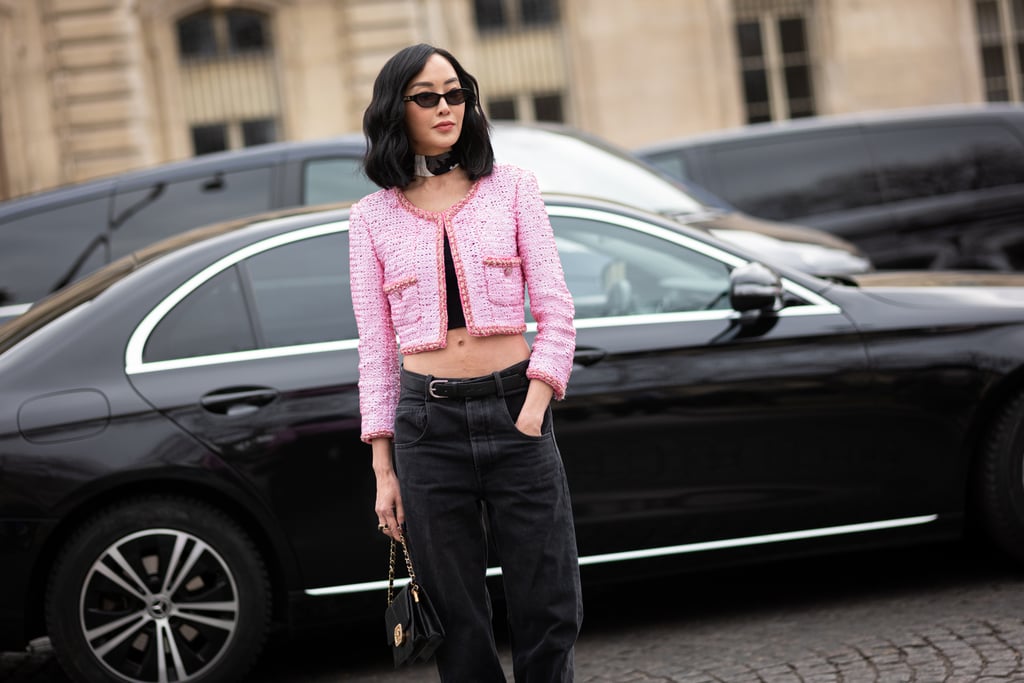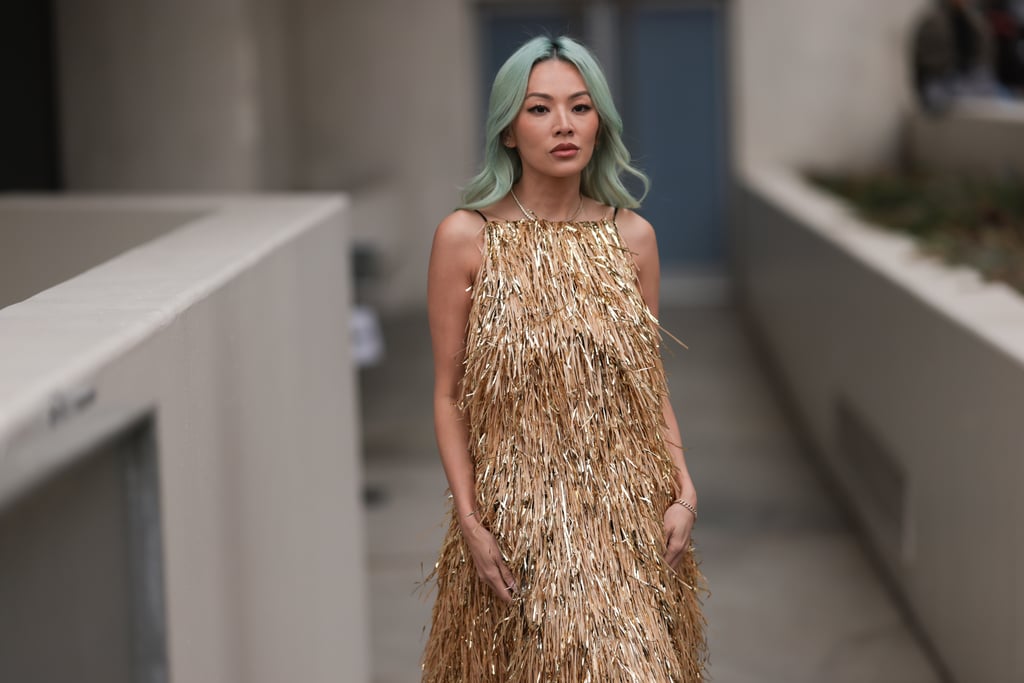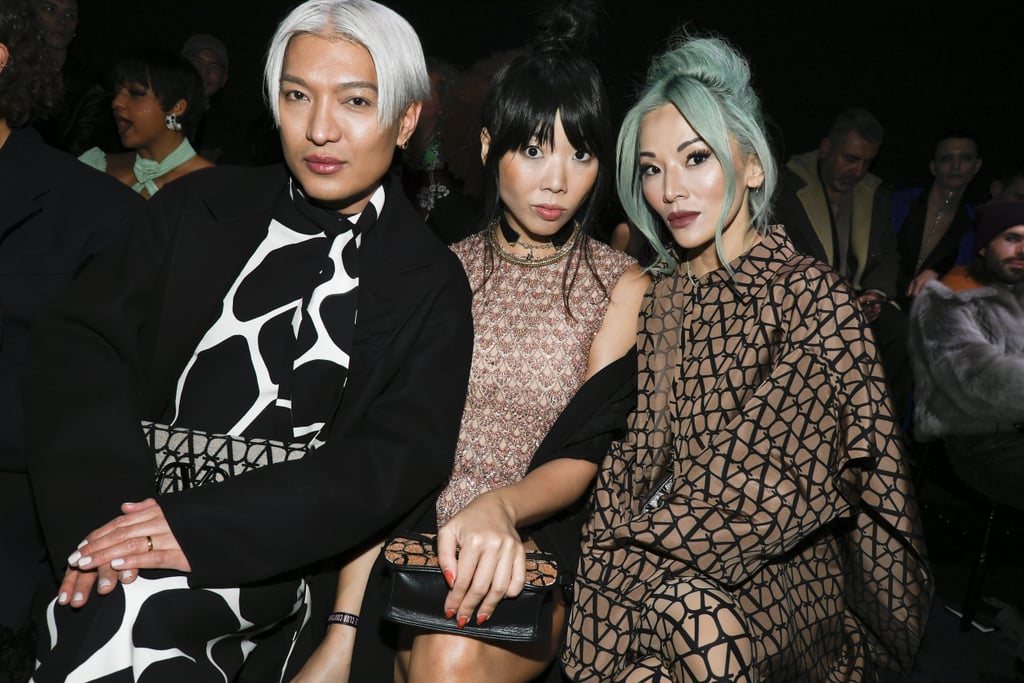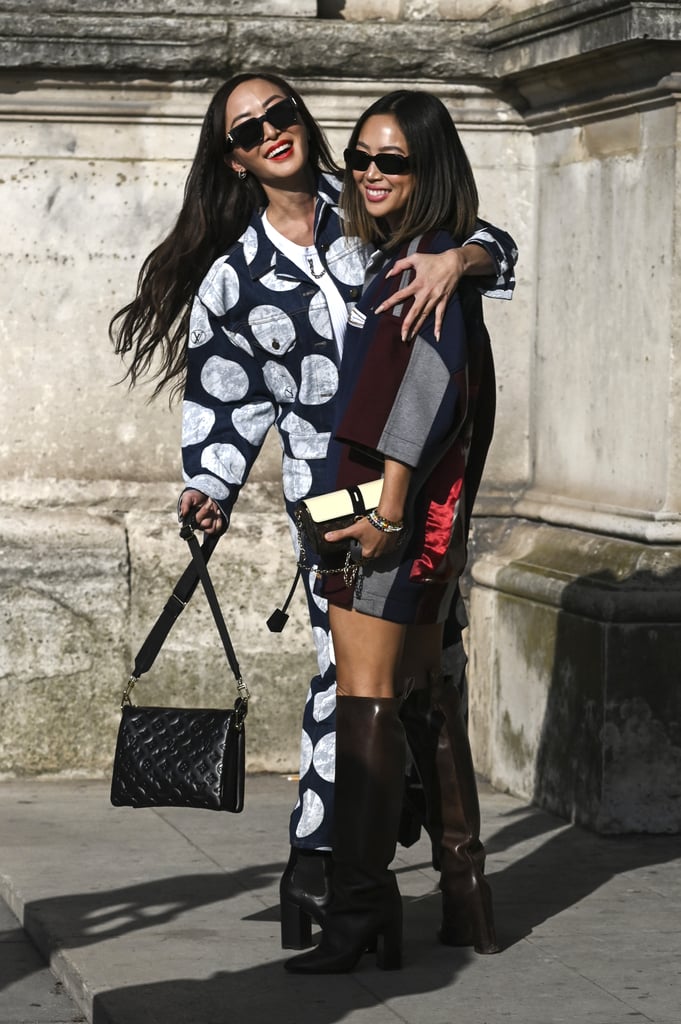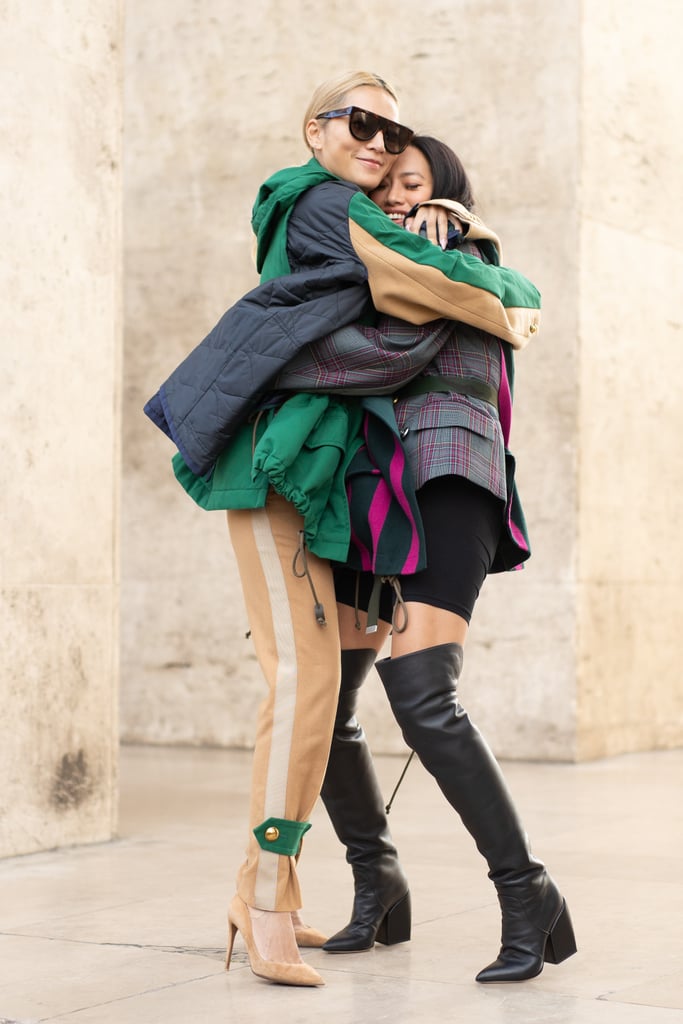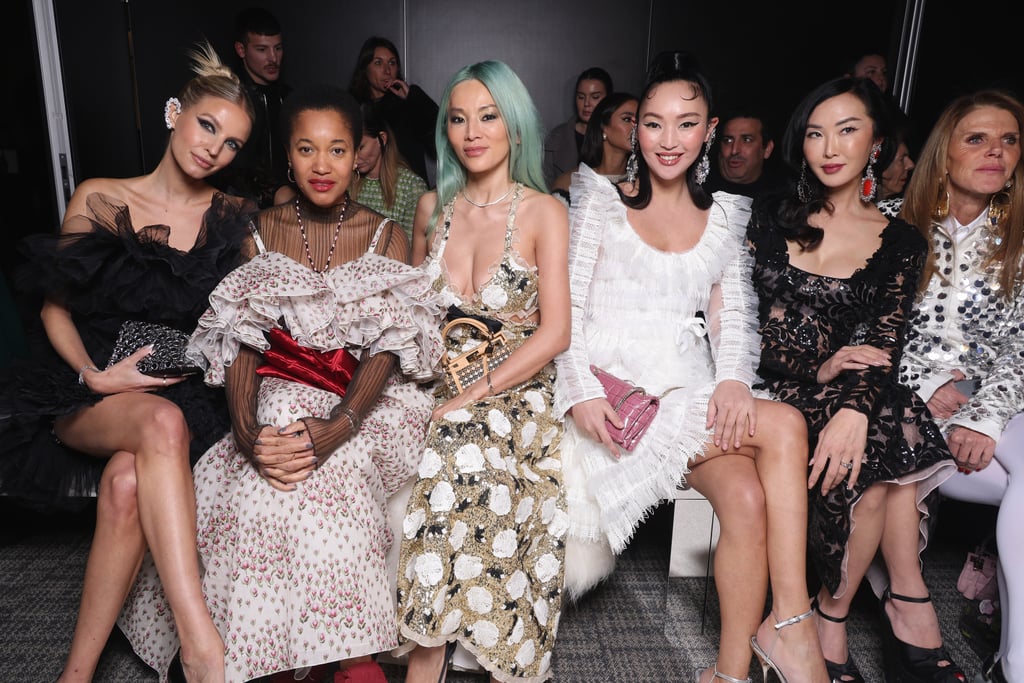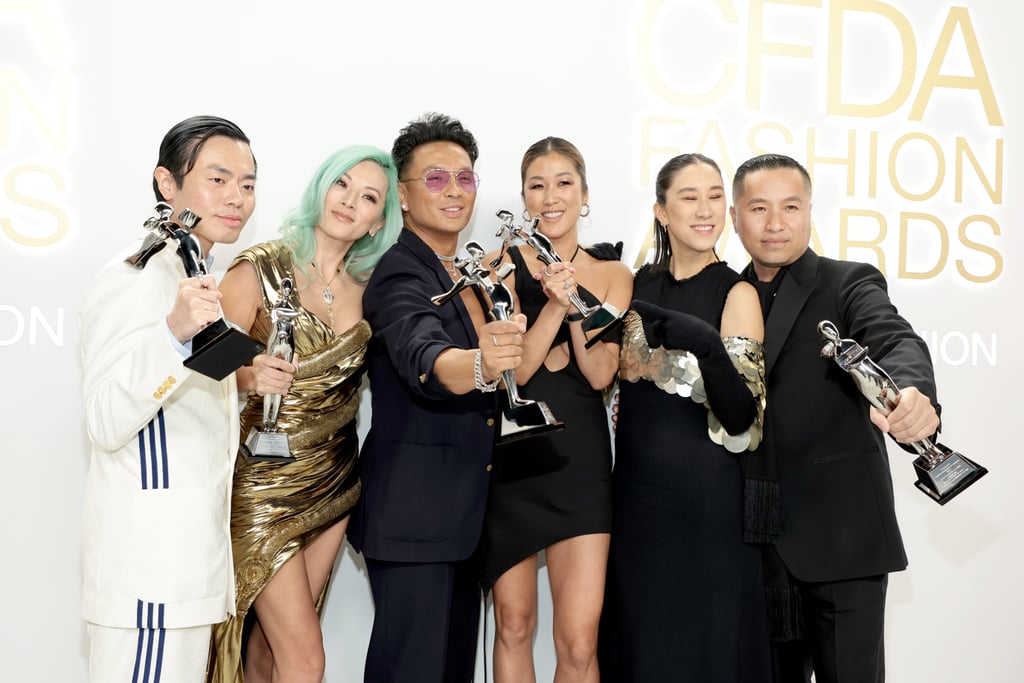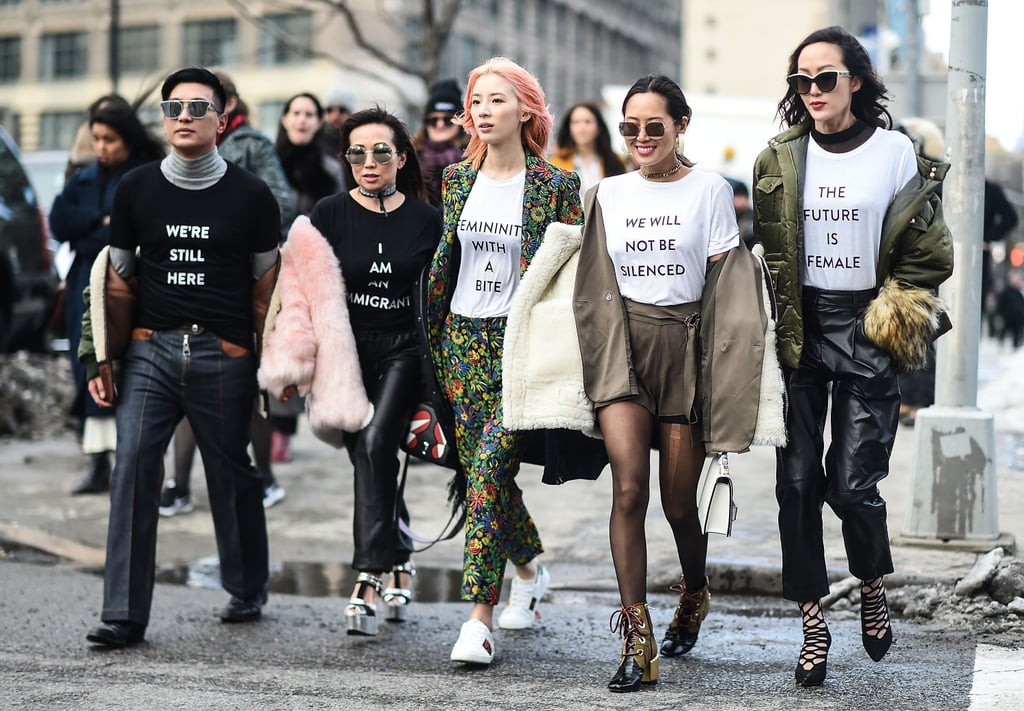As many Asian Americans have said, growing up, it was rare to see our community portrayed in mainstream media. A self-proclaimed fashion girl, I rarely saw myself represented on screen, in magazines, or even on my Tumblr feeds. When you don't often see faces like yours, you find yourself leaning into subcultures and searching for niche communities you can relate to. For me, that was the Asian blogger community of the late 2000s. I scrolled through endless pages of Song of Style [1], Aimee Song's blog-turned-clothing-brand [2]; I saw photos of Bryan Yambao, better known as Bryanboy [3], sitting front row at Fashion Week, typing away on his laptop; and I watched Chriselle Lim [4] share styling tips and tricks on beauty guru Michelle Phan's growing YouTube channel.
This early generation of Asian influencers — then called bloggers — didn't see themselves represented in the major fashion spaces, so they established their own lane online. While there weren't many of them, they made a splash in the industry, infiltrating high fashion, democratizing much of fashion media, and laying the foundation that influencers now stand on today. In doing so, they created space for themselves and the Asian community within the complex, privileged world of fashion.
Since then, the role of influencers has vastly evolved, and new waves of Asian creators have become recognizable, reliable fixtures in the fashion industry. Despite their growing presence in both the fashion-verse and Hollywood, Asians continue to face endless microaggressions, often being lumped together as a group or confused for one another. As journalist and influencer Susie Lau so eloquently wrote in a recent Instagram post [6] that ignited necessary conversation, "The 'bamboo ceiling' in fashion can be tricky to detect. And hard to articulate. We have both visibility and invisibility."
Through all of these challenges, what remains the same is the sense of community among Asian fashion influencers, which has only grown stronger over the years. In fact, there's now an annual "Asian dinner" every Paris Fashion Week that brings together Asians in fashion from all over the world.
To watch these figures who I looked up to growing up develop a tight-knit circle of their own is deeply significant — it brings me both joy and inspiration.
In honor of our APIA Heritage Month package centered on friendship [7], I spoke with OG bloggers Lim and Tina Leung about their firsthand experiences with this community, as well as the challenges they face, progress they've seen since the Stop Asian Hate movement, and, of course, the elusive "Asian dinner" in Paris. While both women have become mainstays in the fashion industry and Asian American community alike, they've utilized their own talents and backgrounds to make them the iconic, distinctive influencers they are today.
Chriselle Lim
Starting out as a wardrobe stylist, Lim launched a YouTube channel in 2008 to showcase her style tips and career advice, with the help of beauty trailblazer Michelle Phan. After a successful run with her tip-driven blog, The Chriselle Factor [8], she pivoted her career into entrepreneurship. She cofounded Bumo [9], a child-care startup, and relaunched fragrance brand Phlur [10], all while maintaining collaborations with luxury fashion brands like Gucci and Chanel and sitting front row at fashion shows. She has continued to evolve her social media presence and created a hilarious "Rich Mom" persona on TikTok [11]. Lim was also one of the high-profile figures who launched the #StopAsianHate hashtag and subsequent online movement amid anti-Asian hate, among other stars like Phillip Lim, Eva Chen, Amanda Nguyen, Daniel Dae Kim, and more.
Tina Leung
As an editor and stylist, Leung hopped back and forth between her native Hong Kong and New York before launching her blog, TinaLoves.com, in 2010. While initially created to share her fashion adventures with family and friends, the site quickly gained traction and eventually led to invites to Paris, New York, and Milan Fashion Weeks. With fellow industry friends Prabal Gurung, Phillip Lim, Laura Kim, and Ezra William, Leung officially formed the Slaysians, also known as the House of Slay [12], following the excitement of "Crazy Rich Asians" in 2018. The collective of influential Asians even won a CFDA Award for its positive social influence in the industry. Recently, Leung also added reality-TV star to her résumé, quickly becoming a fan favorite on "Bling Empire: New York." [13]
On Their First Asian Friends in the Industry
Chriselle Lim: The first two people I became quite close to were Michelle Phan, who was the YouTube makeup OG, and Aimee Song. Michelle really pioneered that space for beauty and taught me the ropes, so I'll forever be grateful to her and remember her for helping me get started. I'm still very, very close to Aimee. I think we met at a Victoria's Secret luncheon. It was just Aimee and me back in the day, especially within the LA fashion scene for influencers. We went to our first Fashion Week together in both New York and Paris — we used to sneak into fashion shows together because no one would invite us. We did everything together and supported each other.
Tina Leung: Susie [Lau], Bryan [Yambao], Tina Craig, and I started around the same time. We started going to shows together, not having the best seats or receiving the warmest welcomes, so it was an interesting barrier to break together. It's been over 10 years already, and we're still great friends. I've definitely had moments where I'm with a fellow Asian in the industry and we realize we're the only Asians there, but I never really noticed there weren't many people that looked like us because I was trying to survive and make a stamp, period, for both Asians and myself.
On Creating Community With Asian Fashion Influencers
TL: I'm Hong Kong-ese and mostly grew up in Hong Kong, so the Asian American experience is newer to me. In Hong Kong, we're all mostly Asian in the fashion community there, so coming here, this community is like having a pocket of home away from home. Asians just get each other. We don't even have to say that much, and it clicks. Particularly when I meet someone with an upbringing in Hong Kong or Asia, there are these childhood references and similar experiences with our parents that get you closer. The community is so warm, and they understand you like no one else.
Especially being at Fashion Week when things can be a little challenging or alienating — Fashion Week and fashion in general is not for the faint of heart — it's comforting to understand each other without saying anything. And we love to eat. Our automatic response is feeding each other, right?
"You're almost guaranteed to see one of us at a fashion event, and there's comfort knowing that people who support you will be there."
CL: Back in the day when I was getting started, I remember attending my first fashion event and feeling intimidated because I didn't know anyone and not many people supported influencers. Now that we have this little community within the fashion industry, it gives me more confidence. You're almost guaranteed to see one of us at a fashion event, and there's comfort knowing that people who support you will be there. There's a power in all of us supporting one another.
You feel less lonely being able to break bread with women who have a similar background as you. We're able to talk about our upbringings without having to explain our cultural differences. Coming from Asian American immigrant parents, we all had a similar experience. Creativity is in our DNA, but our parents may not have allowed us to explore that, so we all get it. There's a level of comfort there, of being able to understand and be seen by one another.
On Getting Confused With Other Notable Asian Influencers
TL: This happens to me all the time. I have green hair now, but when I was blond, people called me Tiffany [Hsu] [14], and people would go up to Tiffany on the street and go, "Tina!" We wanted to get T-shirts made that said "Not Tiffany" and "Not Tina" and stand next to each other at shows. We still have to do that one day. There was also this dinner where I came in and went to get my photo taken, and the photographer said, "I shot you already." So I walked away and talked to Tiffany, who told me she had arrived earlier and was the one who'd been photographed. I try to give people the benefit of the doubt, but . . .
CL: Oh, all the time. I still get that confusion, it's funny. Photographers will tag me in photos and I'm like, "That's not even me." I think it's an honest mistake, but obviously, all Asians do not look alike. Now that I have extensions, I don't get it as much, but when I had short hair, people would mistake me for Nicole Warne [15] of Gary Pepper Girl, Tiffany Hsu, and Vanessa Hong [16], even though she's blond.
On Whether There's Competition Among Asian Influencers
CL: It's about being able to support each other, because there's so many different types of opportunities now, and it's impossible for one person to do it all. We're all rooting for each other. Even though you might be up against another Asian American for a certain job, you know that we're always trying to celebrate everyone's wins as a community. As the industry grows, and more opportunities are open for Asians and Asian Americans, there's going to be even more jobs for all of us.
On the Annual "Asian Dinner" in Paris
TL: We have an Asian dinner in Paris every single season, where we bring together Asians in fashion from all over the world, as well as a few honorary Asians. It's a really loud, drunken gathering during Paris Fashion Week, where we have yummy Chinese food.
CL: There's no agenda, and it's not branded or sponsored. We're there to have a good time, relax, and enjoy each other's company. Having a family like that in fashion is so comforting, especially because there's so much competition in this industry.
On Their Larger Impact For the Asian American Community
TL: When we started the House of Slay during the pandemic, we just wanted to spread the love we had for each other and wanted everyone to feel less alone. We never knew we'd make such an impact. But receiving CFDA's Positive Social Influence award and being recognized as a minority group in fashion made me realize we were being heard and seen. We were doing something out of joy, but I think it helped everyone on the outside see the strength of our community. The response made us all even closer as friends.
CL: The Stop Asian Hate campaign was created by a group of us. We're all in a chat group, so we said, "Hey, who wants to be a part of this video? Send this in," and I ended up piecing it together for everyone. You do that because you want to support the community. We all have platforms that are influential. When you have a platform, it's important that you're showing up for your community.
On the Stop Asian Hate Movement, 2 Years Later
CL: Movements are great because they create awareness, but for true change to happen, it needs to happen internally. Since the world has opened up again, I think people have less focus on what happened in the last two years. The question now is: how do we continue to raise awareness about this, even if people are not stuck at home and on their phones all day anymore?
TL: I don't want to generalize, but I think for most of us, when we previously saw hate against our community, we wanted to sweep it under the rug and not make such a big deal out of it. But when it came to such brutal, constant attacks against our elders, that was the breaking point where everyone wanted to join together.

